Bed Bug Identification & Control
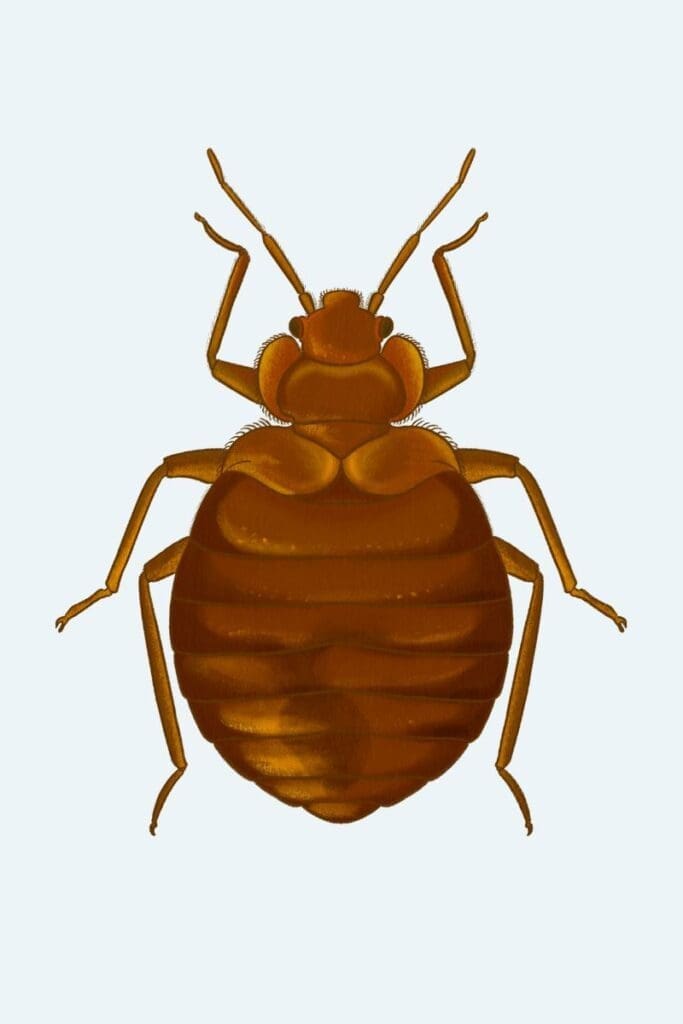
What Are Bed Bugs?
Bed bugs (Cimex lectularius) are small, flat, reddish-brown insects that feed on blood at night while people sleep. These pests are experts at hiding, making them notoriously difficult to detect and exterminate.
Professional treatment for bed bugs involves a thorough inspection, ideally by a certified bed bug-sniffing dog, followed by methods like pesticide application, heat treatment, or fumigation.
Behavior
Bed bugs are active at night and feed on blood every 3–7 days. They use body heat, carbon dioxide, and odors to locate sleeping hosts.
During the day, bed bugs hide in dark, narrow spaces such as mattresses seams, bed frames, and upholstered furniture. Their tiny, flat bodies allow them to squeeze into gaps as small as 2 millimeters.
They also easily spread by crawling into neighboring apartments or hitching rides in bags, luggage, furniture, clothing, and personal items.
Risk Factors
Anyone can get bed bugs, but you may be at higher risk if:
- You travel frequently
- You visited an infested area, such as a hotel, school, or locker room
- You recently acquired secondhand furniture
- You live in an apartment building where neighbors have had bed bugs
Early Signs of Bed Bugs
Bed bugs often go unnoticed due to their size and ability to hide, which makes it easy for them to reproduce and spread. Signs of a potential infestation include:
- Bites
- Bloodstains on sheets
- Fecal marks
- Musty odors
- Shell casings
- Eggs
- Actual bed bugs
Read More: How to Know if You Have Bed Bugs: 7 Early Signs to Look For
Identification
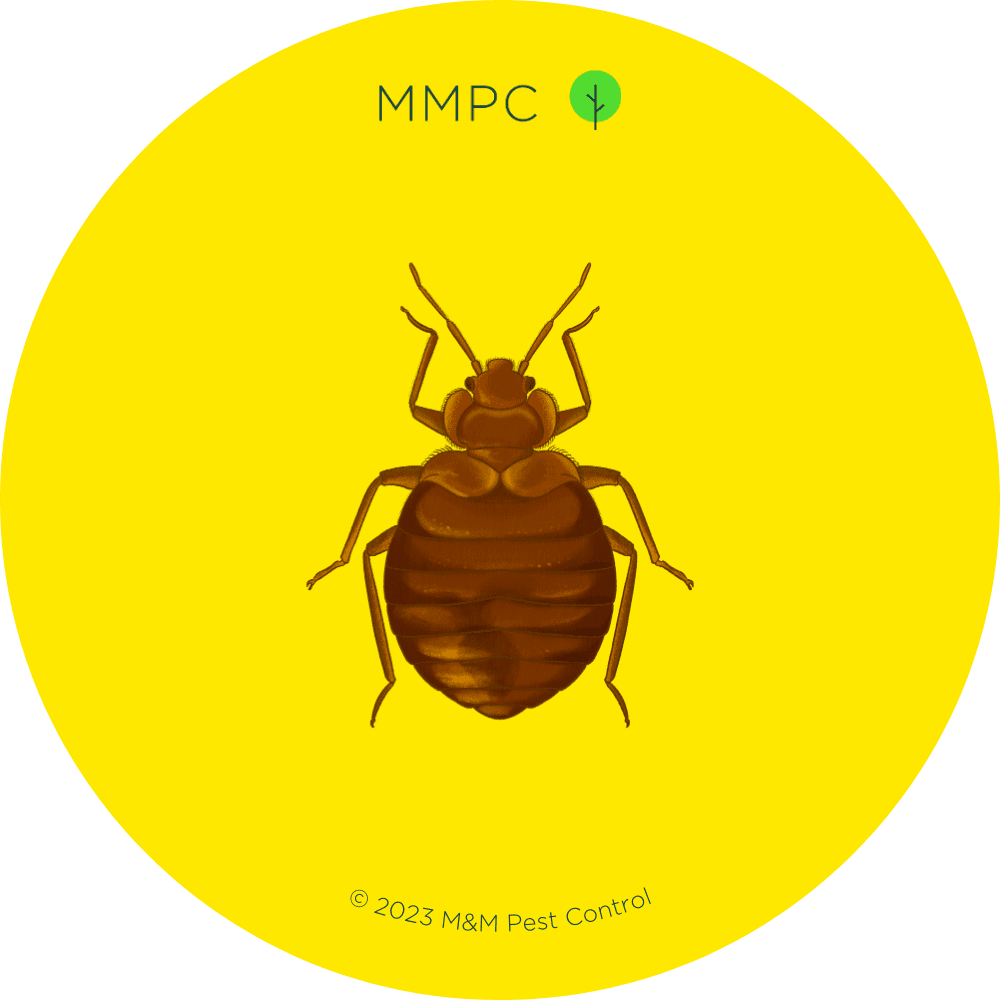
Adult Bed Bug
Bed bugs are reddish-brown, wingless insects with flat, oval bodies that enlarge after feeding. They’re typically around the size of a flax seed or a small apple seed.

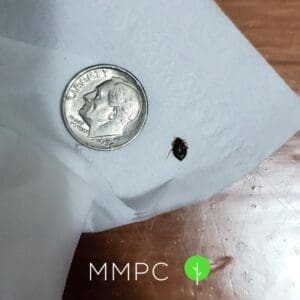
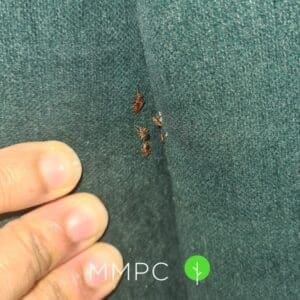
Size: 1/6″ – 1/4″ (4 – 7 mm)
Color: Mahogany to red-brown
Identifying Features:
- A flat, broad abdomen with 8 horizontal grooves
- A wide dorsal plate (pronotum) that flares outwards
- Squarish, protruding mouthparts
- Small, beady eyes on each side of the head
- Short antennae with 4 segments, bowing outwards
- 6 thin legs
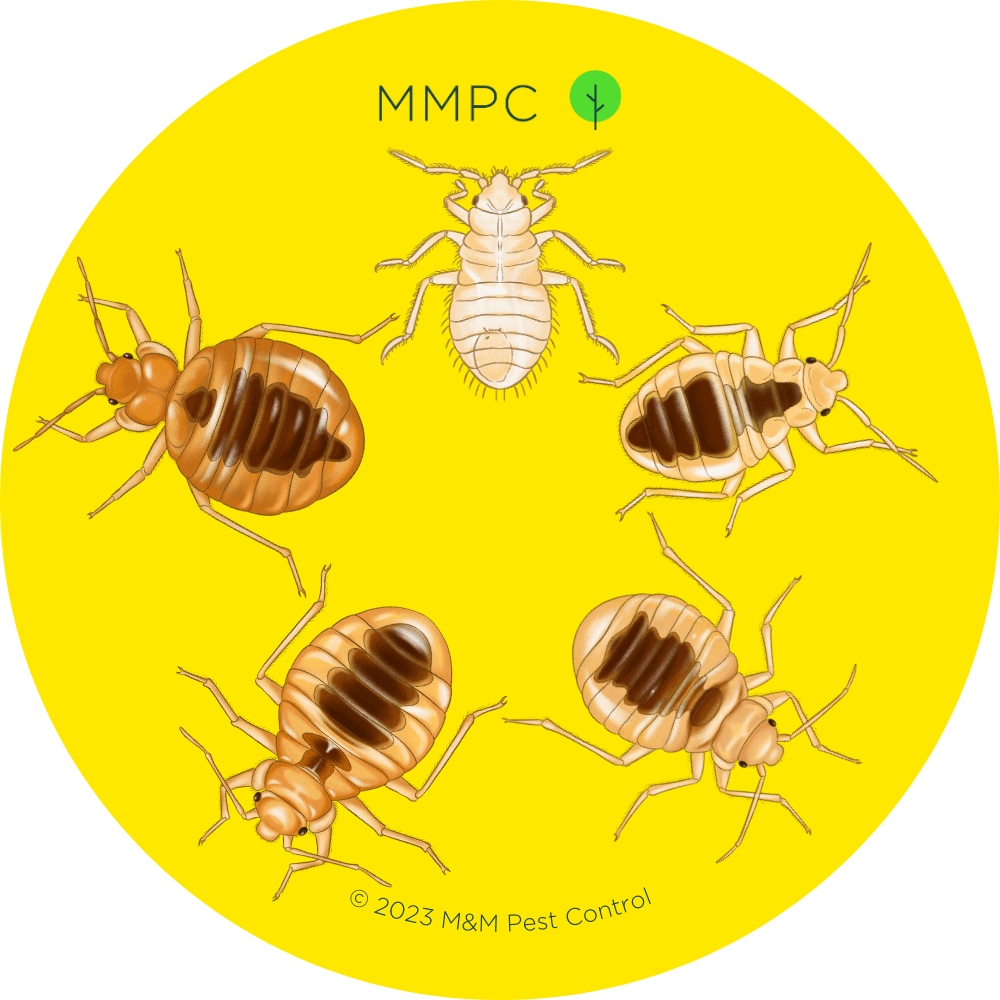
Bed Bug Nymphs
Baby bed bugs, or nymphs, are translucent when hatched and become larger and darker in color as they grow. The bed bug lifecycle has 5 instar stages. Between each stage, the growing bed bug molts and leaves behind a hollow shell casing.
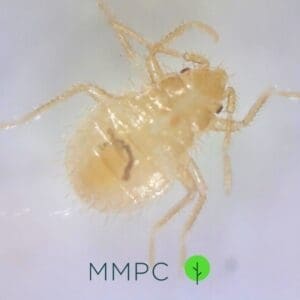
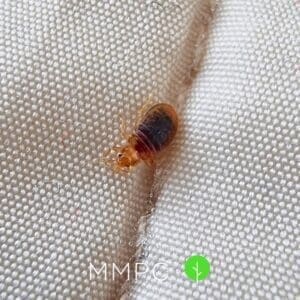
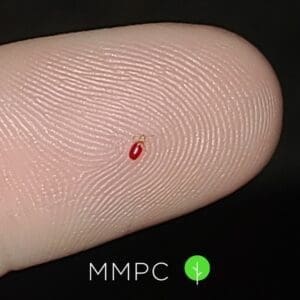
Size: As small as 1/16″ (1.5 mm)
Color: Yellowish white to light brown
Identifying Features:
- Similar to adult bed bugs
- If recently fed, you can see a red or dark-colored blob of digested blood inside its translucent body
Control

How to Get Rid of Bed Bugs
Here are some basic steps to help manage a bed bug infestation. While these methods may not completely eliminate all bed bugs, they can significantly reduce their numbers and prevent further spreading.
Vacuuming
If you know where bed bugs are hiding, use a vacuum with a crevice tool to suck them up. After vacuuming, immediately empty the vacuum contents into sealed plastic bags and sanitize the canister and filters with isopropyl alcohol.
Decluttering
Decluttering helps make the treatment process easier by allowing better access to harborage areas.
Inspect clothes and belongings before removing them from the infested room. Place infested items in sealed plastic bags to prevent bed bugs from escaping.
Laundering
Clothing and bedsheets from infested areas should be placed in sealed plastic bags before laundering. Wash and dry using the highest temperature settings the fabric can withstand.
- Washing: A 30-minute wash cycle at 140°F (60°C) kills 100% of bed bugs at all life stages.
- Drying: Tumble dry on a hot cycle exceeding 104°F (40°C) for at least 30 minutes.
Steaming
A portable steam cleaner can be used to treat mattresses and upholstered furniture. Water forms steam at 212°F (100°C), which kills bed bugs on contact instantly.
Apply steam slowly and evenly, focusing on seams and joints where bed bugs typically hide.
Read More: Can Steam Kill Bed Bugs?
Freezing
Small items can be treated by freezing them.
Place the items in sealed plastic bags and leave them inside a freezer with temperature at or below -4 °F (-20 °C) for 2 to 4 days. Avoid using this method for electronics with LCD screens.
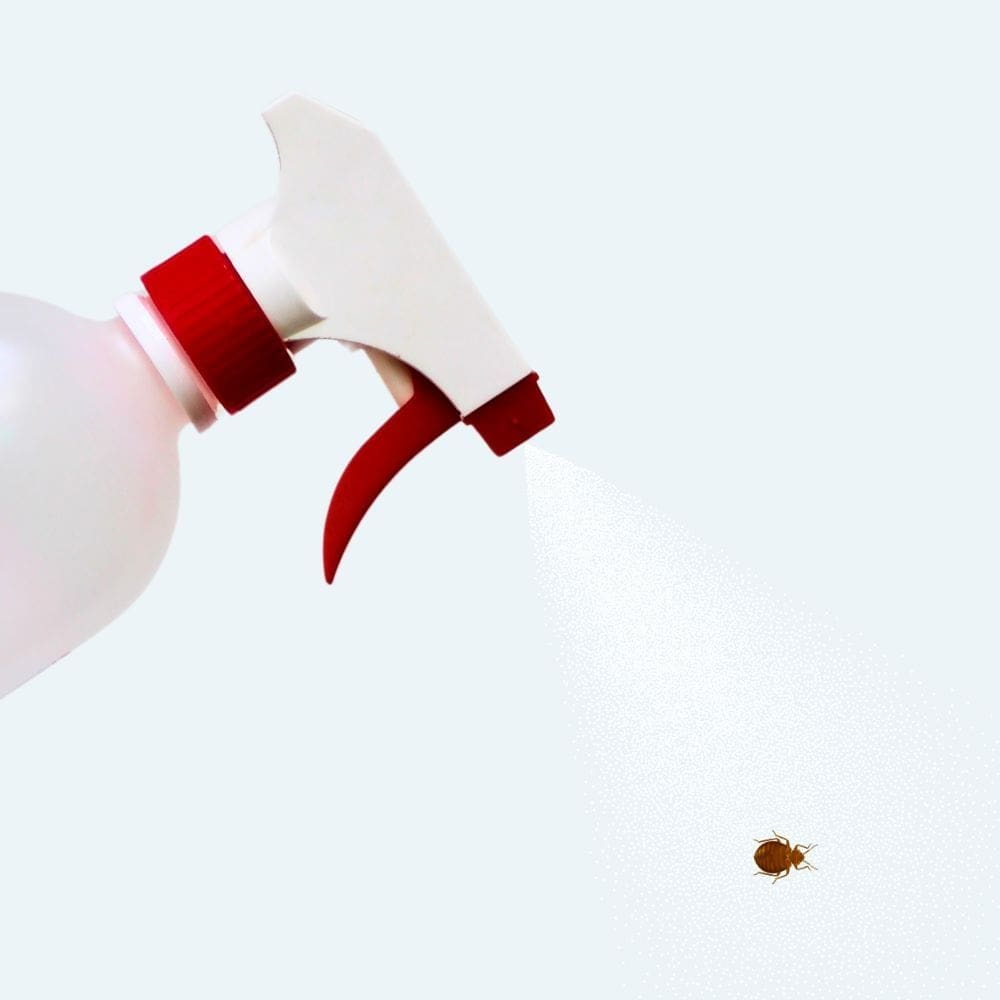
Recommended Products
Before attempting to get rid of bed bugs on your own, it’s best to consult a professional. For lighter infestations, here are some products we recommend to clients.
Keep in mind that DIY treatments usually won’t eliminate 100% of bed bugs, and survivors can quickly repopulate.
Sprays: 91% Isopropyl Alcohol
A spray bottle filled with 91% isopropyl alcohol (rubbing alcohol) works well to kill bed bugs on contact. Commercial bed bug sprays and foggers also work but should be used with caution—always follow the label instructions.
Sprays are not effective at reaching bed bugs hidden in cracks and crevices, so they should not be relied upon to fully eliminate an infestation.
Traps: Bed Bug Interceptors
Interceptors are passive traps placed under the legs of your bed to catch bed bugs. These devices resemble small dishes with two concentric walls: the outer wall is rough, allowing bed bugs to crawl in, while the inner wall is slippery, preventing them from escaping.
Even for professionals, interceptors are valuable for monitoring infestations during and after treatment. Depending on the situation, we may leave interceptor traps in treated areas for several weeks to confirm that bed bugs were successfully exterminated.
Diatomaceous Earth
Diatomaceous earth (DE) is a powder-like desiccant made from ground-up fossils of single-celled marine algae called diatoms. Under a microscope, DE particles look like tiny, hollow cylinders with sharp edges.
When bed bugs come in contact with DE, the abrasive particles destroy the waxy coating of their shells. As a result, moisture escapes from their bodies and causes them to die from dehydration.
If you use DE, make sure it’s labeled “Food Grade”, and carefully follow safety instructions to avoid skin irritation and respiratory issues from inhalation.
Read More: How to Use Diatomaceous Earth to Kill Bed Bugs
Mattress Encasements
Mattress encasements won’t eliminate bed bugs but can provide some relief while you pursue a more permanent solution. These covers are designed to completely encase the mattress, with reinforced seams and zippers that prevent bed bugs from escaping or entering.
FAQs
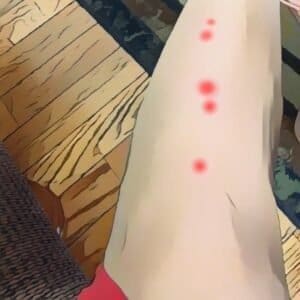
What Do Bed Bug Bites Look Like?
Nighttime bites from bed bugs may leave behind itchy, red bumps on exposed areas of skin. Their bites frequently appear in clusters of 3–5 in a linear or zigzag pattern (known as the “breakfast, lunch, and dinner” sign).
Different people react differently to being bitten. For some, bed bug bites result in rashes, allergic reactions, psychological distress, or nothing at all (approximately 30% of people don’t exhibit any symptoms).
Fortunately, bed bugs do not transmit diseases and serious allergic reactions are rare. In most cases, symptoms disappear after a week or two. Over-the-counter treatments such as hydrocortisone cream or oral antihistamines may be used to reduce itchiness and inflammation.
Read More: “Breakfast, Lunch, and Dinner” Sign of Bed Bug Bites
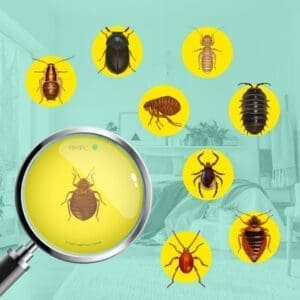
What Other Bugs Look Like Bed Bugs?
Found a suspicious bug in your home that looks like a bed bug? Before you freak out, here are 8 other common household pests that it could be.
Read More: 8 Bugs That Look Like Bed Bugs
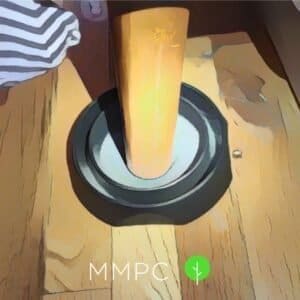
How Do Bed Bug Traps Work?
Bed bug traps, or monitors, are small devices designed to catch or collect bed bugs. As professionals, we refer to them as monitors because they’re useful diagnostic tools for (1) collecting evidence of bed bugs and (2) monitoring the severity of an infestation over time.
Read More: Bed Bug Traps: Common Types & How They Work

Can You Get Bed Bugs at the Laundromat or Dry Cleaners?
Though the risk is relatively low, laundromats and dry cleaners are potential places where people can accidentally pick up bed bugs.
Read More: How to Deal With Bed Bugs at the Laundromat or Dry Cleaners
Our Services
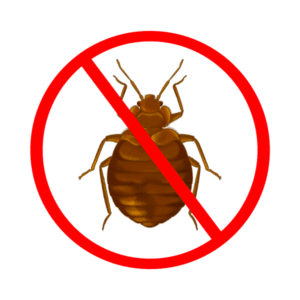

If you need help with bed bugs in New York City or the Tri-State Area, contact MMPC for NESDCA-certified K9 inspections and eco-friendly bed bug treatments.
We are available seven days a week to address your pest control needs.



